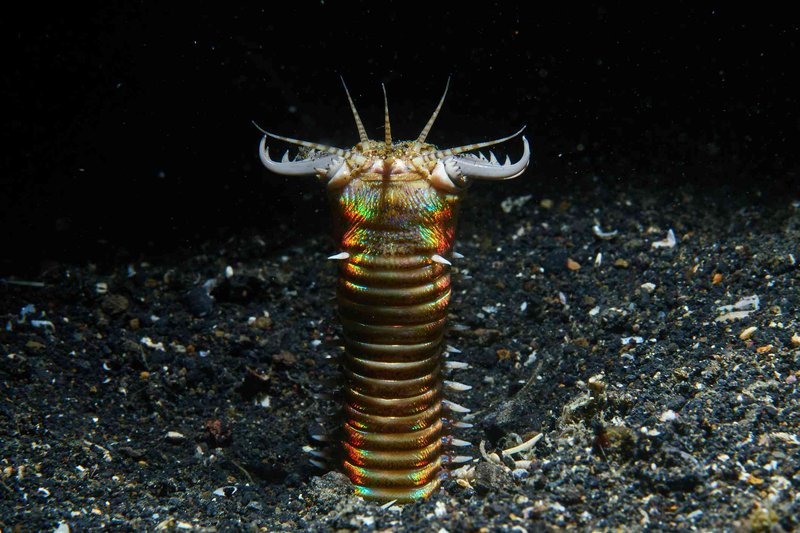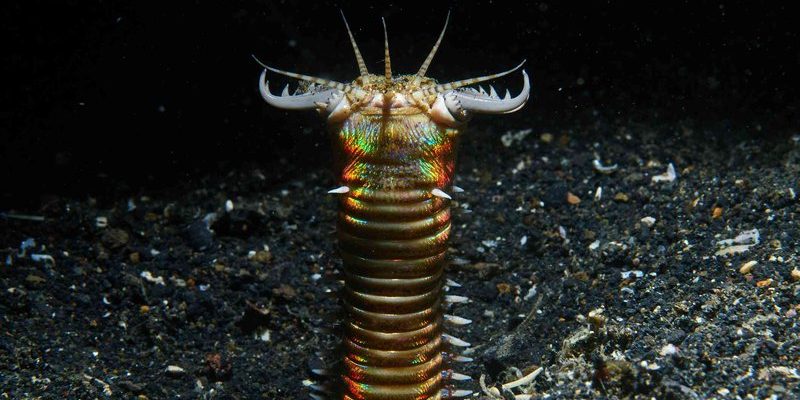
Aquascaping is like designing a miniature garden underwater. Whether you’re setting up a small tank for shrimp or a large one for tropical fish, the layout and materials you use can really make a difference. But with the wrong materials or placement, you might inadvertently create a cozy little home for bobbit worms. So, let’s dive deep into this topic, ensuring your aquarium remains a safe and stunning space.
What is a Bobbit Worm?
Before we get into the nitty-gritty of aquascaping, let’s clarify what a bobbit worm actually is. These marine worms, known scientifically as *Eunice aphroditois*, can grow quite long—some up to 10 feet! Their bodies are segmented, and they usually hide in burrows, waiting to ambush their prey. Imagine them as the stealthy predators of the aquarium world. They extend a portion of their body to catch fish or crustaceans that swim too close, leading to unexpected losses in your tank.
Now, you might wonder why these worms get such a bad reputation. Well, in an aquarium, they can wreak havoc. They’re not just scavengers; they actively hunt. If you accidentally introduce one into your tank, your fish could be at risk. They thrive in environments with plenty of hiding spots, making clever aquascaping essential.
Understanding the Ideal Habitat for Bobbit Worms
Bobbit worms love dark, nutrient-rich environments where they can burrow. That means if your aquarium has lots of organic matter and hiding spots, you’re giving them a welcome mat. They particularly enjoy substrates that are soft and sandy, as these provide the perfect material to create their burrows. Some fishkeepers have reported finding bobbit worms after introducing live rock or sand from the ocean, which is often where these pests come from.
Here’s the thing: if you decide to use live rock in your aquascape, ensure it’s from a reputable source and hasn’t been exposed to harmful hitchhikers. A thorough rinse and inspection can save you a lot of trouble down the line. If possible, consider using dry rock instead, which won’t harbor these unwanted guests.
Picking the Right Substrate
Choosing the right substrate is crucial when you’re aquascaping. A sandy bottom might look nice but could also invite bobbit worms if it’s rich in organic material. Instead, consider using gravel or special substrates designed for planted tanks.
Here are some substrate options that can help minimize bobbit worm risk:
- Gravel: Durable and less inviting for burrowing worms.
- Clay substrates: Great for planted tanks and harder for worms to dig into.
- Quartz sand: Less organic material to attract unwanted creatures.
When thinking about your substrate, keep in mind that it should not only look good but also support the health of your aquatic plants and fish. Sometimes, a little compromise can lead to a more balanced environment.
Designing with Hiding Spots in Mind
While creating hiding spots is essential for fish, it’s a balancing act. Instead of piling rocks and driftwood haphazardly, think about how you can create visual interest without fostering the perfect worm lair.
Try to:
- Use open spaces: This allows fish to swim freely and reduces the chance of creating crannies for worms.
- Position decorations wisely: Place rocks and plants in a way that limits dark, enclosed spaces.
- Utilize floating plants: These can create shade without providing a burrowing area underneath.
By carefully designing your aquascape, you can satisfy the aesthetic needs of your fish while keeping those elusive bobbit worms at bay.
Regular Maintenance to Deter Bobbit Worms
Keeping your aquarium clean plays a huge role in preventing any unwanted residents, including bobbit worms. A dirty tank is a magnet for many types of pests. Here’s how to maintain a clean environment:
1. **Perform regular water changes.** Aim for 10-15% weekly to keep the water parameters stable and remove excess nutrients.
2. **Remove uneaten food.** Leftover food can decay, creating a buffet for worms.
3. **Vacuum the substrate.** During water changes, don’t forget to clean the substrate to remove waste and detritus.
Taking care of your aquarium might feel like a chore, but think of it as tending to a garden. A little love and attention go a long way in keeping it healthy and beautiful.
What to Do If You Find a Bobbit Worm
If you accidentally introduce a bobbit worm into your aquarium, don’t panic. The first step is to confirm that it’s indeed a bobbit worm and not something less harmful. They often hide, so you might need to remove decor to get a good look. If you find one, here’s how to deal with it:
- Manual removal: Use gloves and a net to safely extract it. Be cautious; these worms can bite!
- Trap it: Create a trap using a small baited container. This can help catch the worm without disturbing the rest of your tank.
- Consult an expert: If you’re unsure about handling it, reach out to your local fish store or aquarium club for advice.
Remember, it’s essential to act quickly. The longer the worm is in your aquarium, the more it can affect your fish and other inhabitants.
Preventing Future Infestations
Once you’re bobbit worm-free, it’s time to take steps to prevent future infestations. Here are some measures you can implement:
– **Quarantine new additions:** Always quarantine fish, plants, and decor before introducing them into your aquarium. This helps catch any potential issues early.
– **Choose dry rock and substrate:** Whenever possible, avoid live rock and opt for dry alternatives to reduce the risk of hitchhikers.
– **Educate yourself:** Stay informed about common pests and best practices for maintaining your aquarium. The more you know, the better equipped you’ll be to handle issues as they arise.
By adopting these practices, you’ll not only protect your aquarium from bobbit worms but also create a thriving, resilient aquatic environment.
In summary, aquascaping isn’t just about creating a beautiful underwater world; it’s about crafting a safe haven for your aquatic friends. By understanding the preferences of bobbit worms and making informed choices during your aquascaping process, you can avoid inviting these unwanted guests into your tank. So, grab those plants, rocks, and decorations, and start creating a gorgeous aquarium that’s also a healthy space for your fish. Happy aquascaping!

